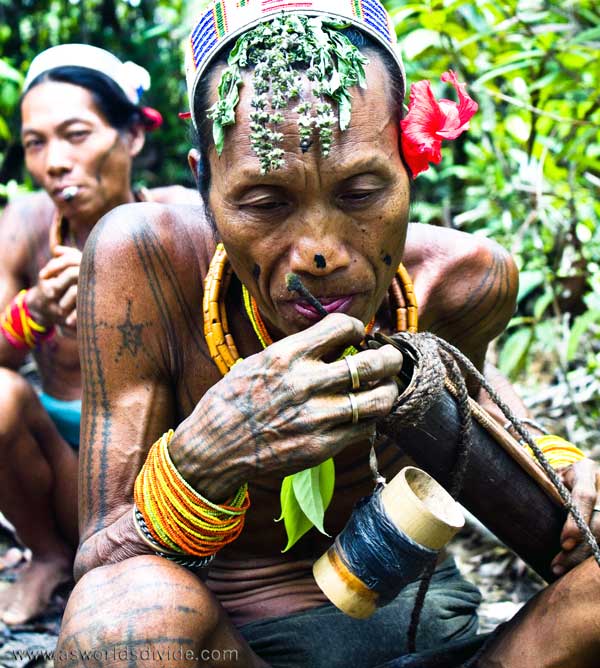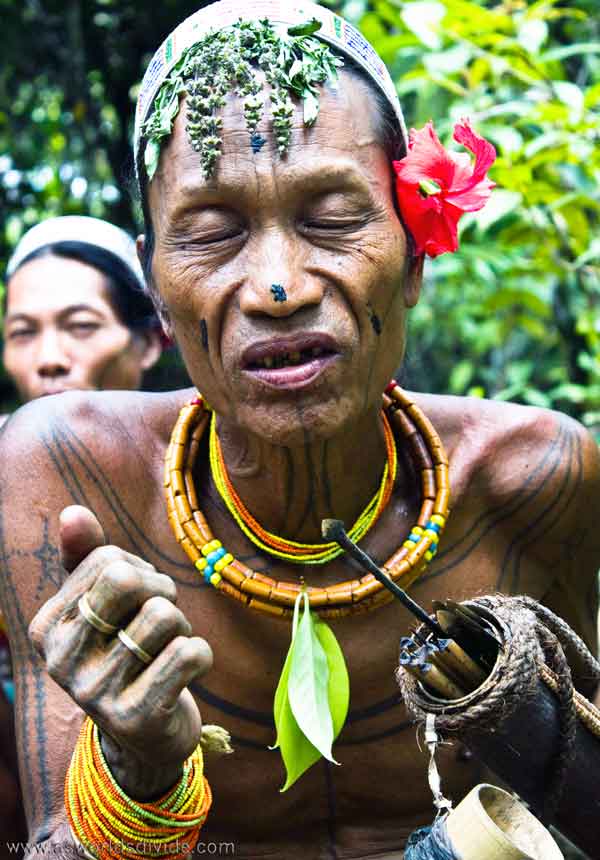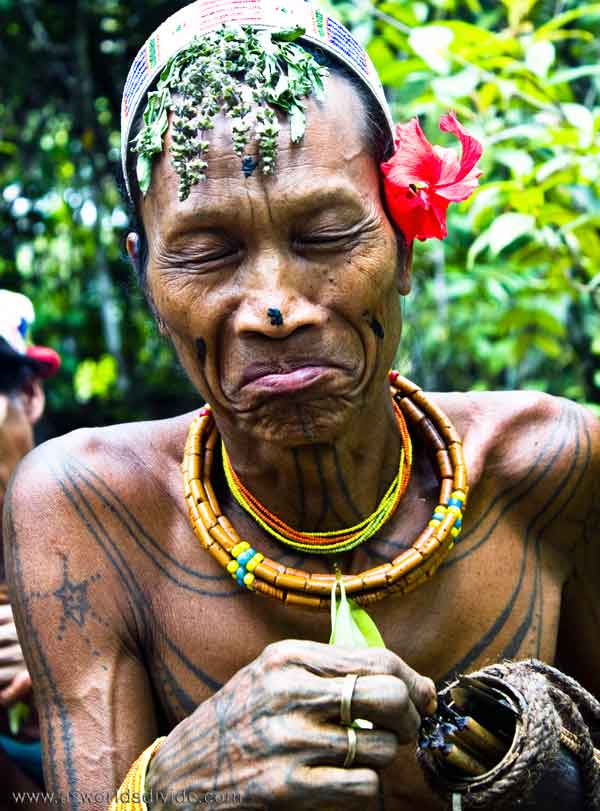GETTING TO KNOW THE SHAMAN, SIKEREI
I wanted to share this sequence of images with you and so thought I’d accompany it with a few observations I find interesting about the Mentawai shaman, Sikerei.
Firstly, to become Sikerei is to devote ones life to teaching, healing, and protecting the people; this is their role. One important component of this role involves learning from their predecessors the skill and knowledge, not just to identify every single species of plant and animal found within their dense rainforest surroundings, but also to know the ways in which each of these can or can’t be used in support of their survival. Which obviously is quite beneficial. Allowing them, among other advantages, access to an extremely large and well-stocked medical cabinet.
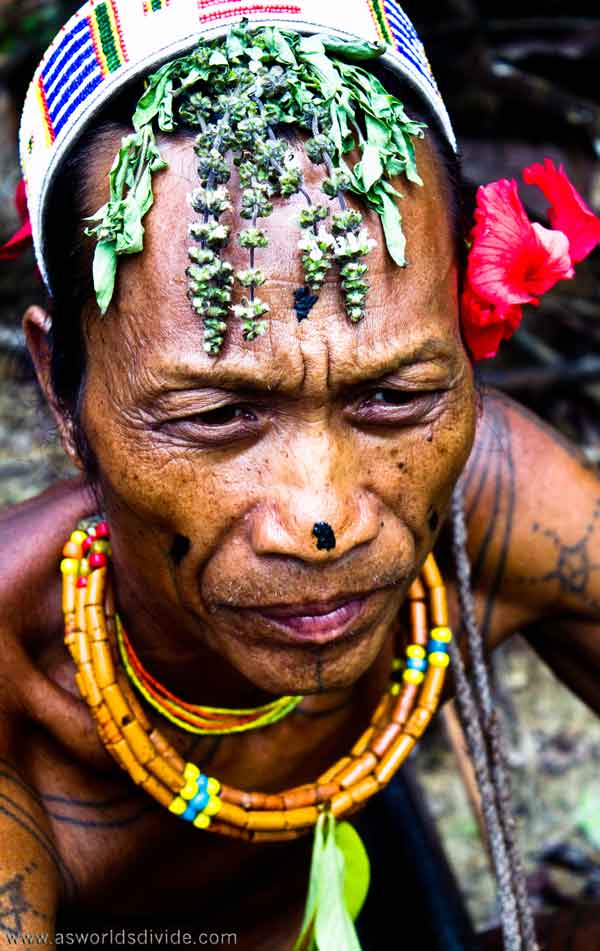
To give this context I’ll recall an incident where, roaming through the jungle one afternoon, I, the stupid foreigner, thought I’d spotted out the corner of my eye a nice plump freshwater shrimp basking in the shallows of a small stream. Moving fast I snatched it up from between the stones. Score. To my surprise though its tail suddenly swang 180º in an uncomfortably wrong direction and proceeded to insert a poisonous spike into the side of my finger. Ah, right, a scorpion. Within moments of this occurring I was being handed a tuff of grated root the youngest of three Sikerei had foraged from the base of a nearby tree, along with the instruction to elevate, hold against the wound, and to advise if the poison reached beyond the wrist area so they could gather and prepare an alternative solution. Ah, ok.
Reflecting back now, being situated there in the depths of a remote rainforest, days from any standardised medical facility, what would I have done had I not been in the presence of such wisdom? I’m not sure. Sat there and cried, probably. But, instead, all I felt was incredibly safe. Which, incidentally, happens to be the principle aim of their role.

Moving away from their societal services, another particularly refreshing trait commonly found in Sikerei – and in most people still practicing a traditional Mentawai lifestyle in fact – is their eagerness to find humour in every aspect of life in much the same way as a child can. A behaviour also found documented in journals dating back as early as 1902, where travellers to Mentawai spoke of time spent ‘with the amiable savages’ and ‘on the Island of happiness’ (REEVES, 2000).

Coincidentally, or perhaps not, what I find interesting about this is that within traditional Mentawai society the figure of a child is revered. In fact, in many ways, the sustainability of their entire culture, lifestyle and peaceful existence is held together by the devotion given to the child. This reflected by the belief they share through ancient cultural myths and legends that reveal almost every resource and skill that has become an integral part of Mentawai lifestyle, and been key to sustaining their survival, was given to them through the spirit of a child.
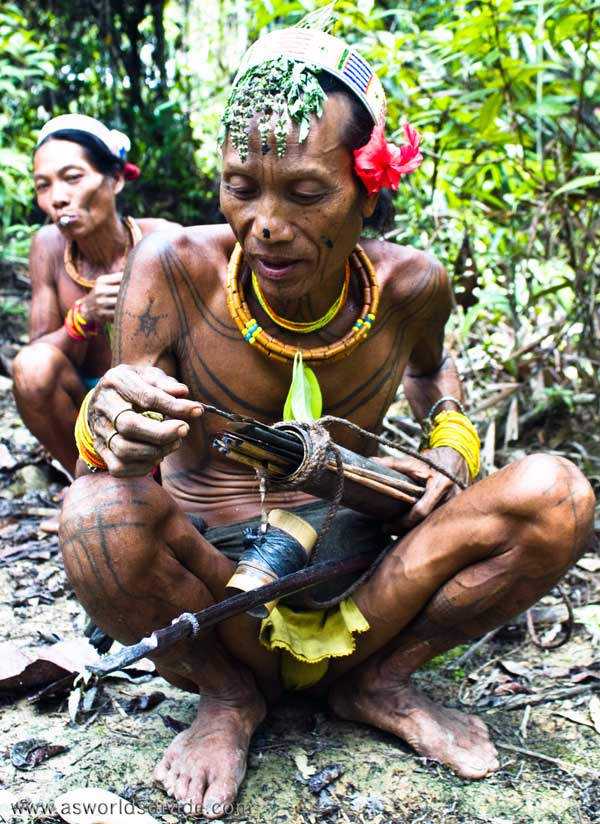
It may be thought fanciful to theorise that an ancient cultural system where a society places the child as the most sacred member could be largely responsible for the jovial and spirited nature of its people; but, whilst pondering your own opinion, do consider what life might be in a world where, as a child, the thing you’re taught to be most proud of is to be a child; where, instead of being taught to fear the responsibilities of adulthood and be faced with the pressure of needing to ‘grow up’, childlike behaviour is actually encouraged in adults, by adults, and celebrated as a wonderful form of entertainment and enjoyment. Because, in such a life, it might just be that the act of being foolish and carefree, the freedom we admire so much in our young, never dies…
